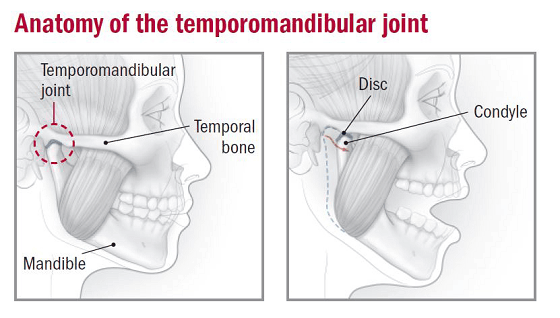For those wondering what fleek is, it basically means something is off, or unusual. So, when is your jawline not on fleek? Complex question with a simple answer. Well, that occurs when your temporomandibular joint or popularly known as TMJ, displaces itself. A little too much of a complex word? Fine, let us break it down.
So your temporomandibular joint, or TMJ, is located below the ear, at the bottom of it. It enables the jaw to move. So without it, you may pretty much have no lower facial movement. Anyway, just like the hip or shoulder, the TMJ is a ball-and-socket joint.
The ball here is called the condyle. Hence, every time you open your mouth to yawn or scream or just to eat, this ball or condyle, pushes forward and then returns back to its original position when we close our mouth.
Now, when you’ve painted a basic picture of this whole concept, just add a little drama to it. Imagine, if the condyle moves way too far from its socket (original position), what are we to do then? Well, for starters, do not panic!
The condyle has probably dislocated because of the adjacent muscles going into a spasm. This tends to loosen up the condyle from its socket, and it goes further than expected. And that, my friends, is when your jawline, is not on fleek.

Symptoms:
This problem has a very visible symptom, and a painful one too. You cannot close your mouth if your condyle gets displaced. There is quite a lot of discomfort till everything is back to where it belongs.
Diagnosis:
A dentist simply figures this out by one, obviously seeing that you are unable to close your mouth, and two, by examining the structure of your jawbone. For any more validation and confirmation, a dental X-ray is also produced.
Expected Duration:
So the problem most definitely isn’t going to be solved till your condyle is back into place. And for a few weeks, the condition may be tender also.
Preventative measures:
You never know when this will happen, but just in case, it is important to know any thing or any manner in which this can be prevented from happening. Following are the key points to keep in mind:
- If you are a person who opens their mouth widely, either to eat, or scream or yawn, you gotta stop doing that. And if it is a habit, a bad one, of course, the important thing is to place your fist under your chin, for a little extra support.
- When the ligament starts to loosen up, is when the condyle is at a risk of displacement. Jaws are sometimes wired shut for a certain duration, which tightens up the ligaments, therefore reducing the risk of condyle displacement.
- A particular surgery called eminectomy eliminates the articulate projection so that the ball of the joint has no risk of getting stuck in front of it.
Treatment:
Might not be very believable but a simple injection of local anesthesia is of very much help in a condyle dislocation. Administering it into the jaw joint, combined with a muscle relaxant, avoids the spasms from occurring. However, the muscle relaxant is administered into a vein in the arm.
A doctor or dentist can also do this with the magic of their hands. But this is possible only when the jaw muscles are in a state of relaxation. The lower part of the jawbone is pulled in a downward direction, while the chin is tipped upwards, to allow the condyle to move from its fixed position. Finally, the condyle is then guided back into its original position, the socket.
An operation for this kind of issue is not necessary. However, if need be, then the jaws are wired shut or elastics are also used as a preventative method to avoid extreme movement of the jaw after the condyle has been fixed back into the socket.
Post treatment care:
- Soft or liquid diet is to be followed for a few weeks after the treatment. Results in reduced stress on the jawbone.
- Hard foods like carrots, apples, walnuts, tough meats, ice cubes etc need to be strictly avoided.
- While opening your mouth, extra care is to be taken of how wide you can open it. Might seem trivial and tiresome, but it is required if you plan on keeping your jawline on fleek.
Expert's Opinions
- Dr. Zita Antao Dental Director of Sabka dentist says "The temporomandibular joint is not sensitive, but if messed with, causing ligaments to loosen up, can result in various issues, the major one being inability to open your mouth."











One thought on “Is your jawline out of proportion?”
great article. nice